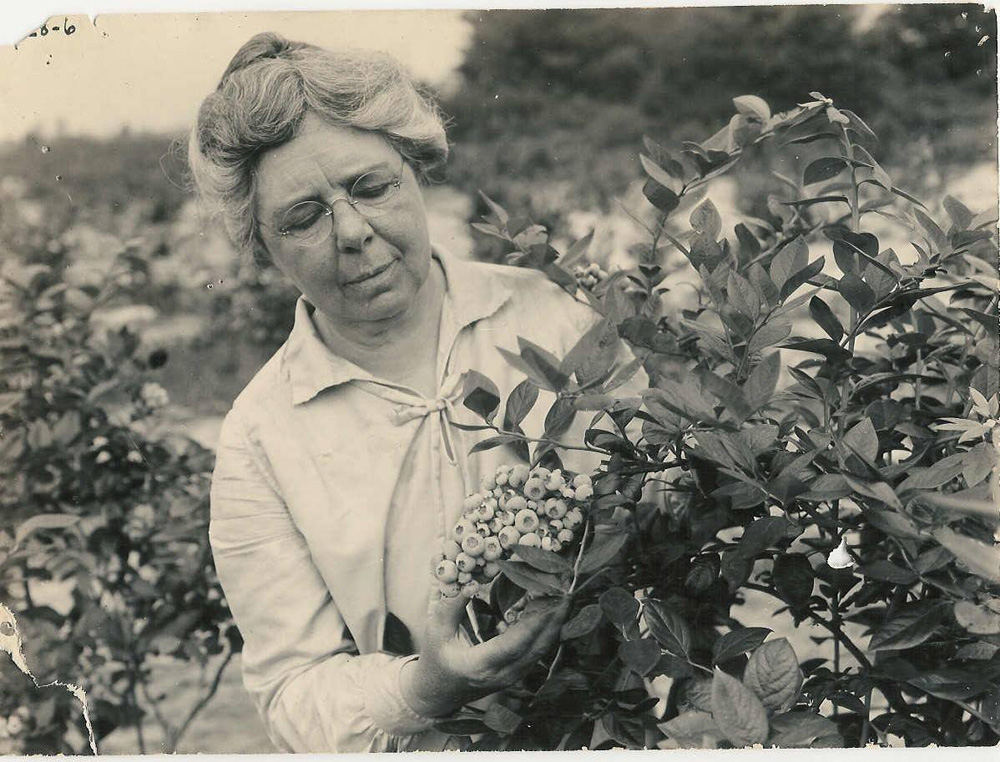4. Crop Innovations and the “Blueberry Queen”
What’s growing here? Blueberries
Farmers play an important role in experimenting with new varieties of fruits and vegetables for market, honing in on the highest quality and most delicious strains of produce. However, at the turn of the twentieth century, no one had successfully domesticated wild blueberries, convinced that they varied too greatly in size and flavor to successfully cultivate.
Elizabeth Coleman White, the daughter of a large-scale cranberry farmer in New Jersey, was determined to prove everyone wrong. She invited the Washington, D.C.-based scientist, Frederick Coville, to her father’s farm. White recruited local woodsmen to identify wild blueberries with the most desirable traits, and Coville cross-fertilized the favored bushes by hand. By 1916, White and Coville had grown the first commercial blueberry crop, sparking a revolution that would drive New Jersey’s blueberry industry to become the second largest in the country by 1986.
In 1927, White organized the New Jersey Blueberry Cooperative Association, earning the nickname, the “Blueberry Queen.” She became the first woman to receive the New Jersey Department of Agriculture citation. However, as a female innovator in the early 1900s, White faced limitations, including her father passing her over to succeed him as president of his agricultural business.
Today, crop innovation remains essential to the success of New Jersey’s agricultural products and industry. Agricultural agents and crop scientists at Rutgers’ Agricultural Experiment Stations and research farms study and develop new crops and production techniques every year, including, famously, developing the Rutgers tomato and the Rutgers Scarlet strawberry. The Extension Stations offer information and support services to local farmers.

Elizabeth Coleman White examines a blueberry bush, 1928.
Courtesy of Whitesbog Preservation Trust